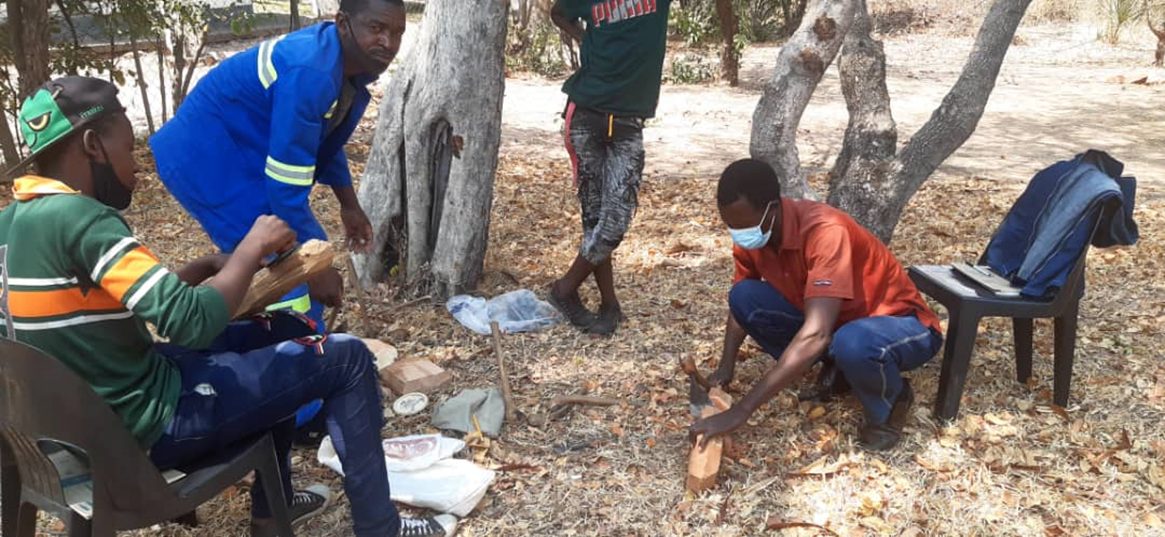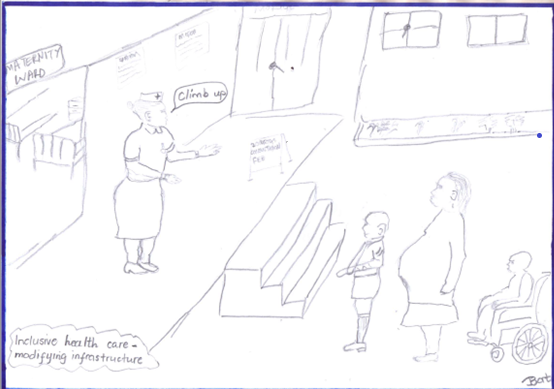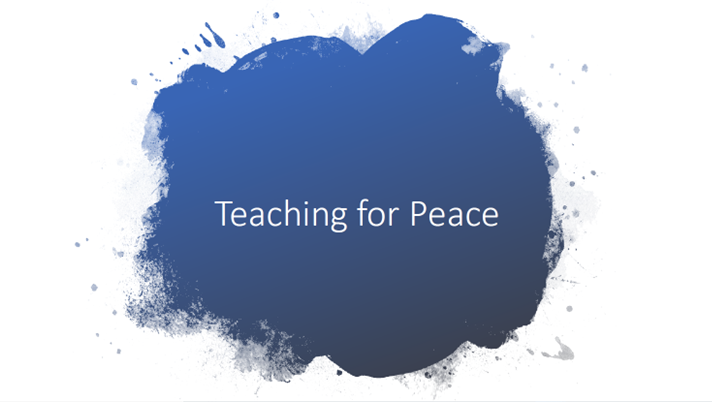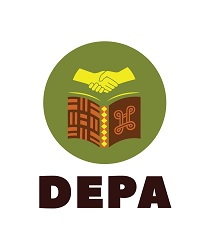Understanding local peace practices using crafts and intergenerational interviews among the Tonga people
Project Introduction
Binga, our research site is in Matabeleland North Province, which borders Midlands and Mashonaland West. It is the epicentre of Tonga-speaking peoples in Zimbabwe with a population according to the 2012 census totalling 139,092. Others know Binga as Basilwizi which means people of the Great Zambezi River due to their historic bond with the rich river.
Currently, the Tonga reside in seven districts in Zimbabwe, namely Hwange, Binga, Nyaminyami, Gokwe North and South, Nkayi and Lupane. Zimbabwean Tonga are scattered and they are not only marginalized but disregarded (Nyota & Mapara, 2014). The Tonga used to occupy land lying on the banks of the Zambezi River, (Ndlovu, 2015). The term ‘Tonga’ implies independence, and it emanates from the way these people lived before the advent of colonization. Unlike other tribes, the Tonga lived without chiefs.
The construction of the Kariba Dam between 1955 and 1959 weakened the Tonga prosperous social and economic processes that were built around the Zambezi River (Muwati, 2015). The Zambezi River was and continues to be their lifeline though with a lot of restrictions. Not only were the Tonga affected by the activities of the settlers, but after independence, they were also affected by the ethnic binaries of Shona or Ndebele classification. Despite the fact that they are the third largest ethnic group, they are classified under the Ndebele ethnic group and this has raised cultural and ethnic clashes between them and the Ndebele (Walker & Boni, 2020). After independence, the majority of the Tonga were excluded from enjoying the national cake. (Ndlovu, 2015). The marginalisation of the Tonga people has seen 70% of their population being classified as poor by the ZIMSTAT after the 2012 census (Mutingwende, 2018; Walker & Boni, 2020).
Historically, the Tonga people survived in the rich valley of the Zambezi River, which they usually called the Kasambezi (Jarrett, 2020), which means “those who know how to bath in a crocodile-infested river.” The Tonga people sustained an agricultural civilization, taking advantage of the fertile river valley soil enabling them to often harvest twice a year. They also fished, hunted forest animals, and gathered wild fruits and vegetables. They worshipped a serpent-like river god named Nyaminyami, who they believed controlled the waters and would kill travellers who wandered too close to the dangerous Kariba Gorge (Jarrett, 2020). The river was at the centre of their way of life.
In some ways, life was able to continue as it had before. Tonga culture has survived the influence of dominant and hegemonic Ndebele culture. As such, the Tonga are known for their craftwork, especially basketry and weaving. Their basketry is intricate with women being the major players (Walker & Boni, 2020). These baskets are specifically designed for specific purposes and that determines their structure. The Tonga people’s resilience and love of their culture have generally been misconstrued by some quarters to mean underdevelopment, backwardness, naivety, and simplicity, among many other negative descriptions and pejorative labels (Mawere, 2015).
Project Methodology
The project collaborates with Binga Craft Centre, Batonga Community Museum, Lusaka Museum, Choma Crafts Centre, teachers and intergenerational participants from the community. Binga Craft Centre and Choma Crafts Centre are organizations that coordinate Tonga craftsmen and women between Zambia and Zimbabwe by collecting their wares and selling them (Ncube, 2019). The Batonga Community Museum was established in 2000 but declared a national museum in September 2002 (Mawere, 2015). These organizations identify the skilled crafts persons and the youths. A local stakeholder consultation meeting was used to identify the organizations and create synergies. For this exercise, two participants from each organization were selected. Following that consultation, the two organizations identified the five-day workshop participants. Four participants were chosen for each craftwork. The five-day workshop involving the youth and the elderly who are specialists in various crafts such as basketry and weaving was held.

Tonga wood carvers initiating the youths in the trade
This intergenerational engagement takes place between crafts persons and the unemployed and disempowered youth with the view of empowering them. The elderly are seasoned experts in the production of various crafts that range from baskets and carvings while the youth are unemployed and marginalized. Intergenerational interviews aimed to promote dialogue between youth and elderly populations. First, the youths were trained on how to conduct interviews especially how to talk to the elders more respectfully as expected in Tonga culture. They were also introduced to how to use digital media to empower their communities through capturing parts of both tangible and intangible culture as well as recording invaluable conversations (Gift et al., 2018).
After this training, the youths were each given an opportunity to interview and record their conversations with the elderly. Consent was sought from the elderly before they were recorded to ease the tense situation that might emerge from the idea of recording and the process took place while the elderly were teaching the youth about their craftsmanship. Capturing memories in this way enabled the cultural and intellectual transformation (Gift et al., 2018) of the Tonga to take place in a freer environment and way.
Project Highlights
A plethora of multidimensional conceptual issues emerged from the DEPA project. First and foremost, it emerged that decolonising education for peace should be deliberate as there is under-representation of indigenous ways of teaching peace. It was also established that the teachers are still teaching for examinations instead of focusing on the competencies as demanded by the global village hence the need for a paradigm shift. This shift would include adopting transformative pedagogy since it promotes an environment that allows learners to engage each other and with their learning materials.
The project established that community-based values are critical towards creating communally esteemed capabilities. As such, it is imperative for curriculum implementers to make community-based values core when planning their teaching and learning exercises. These values and knowledges need to be fostered through a deliberate redefinition of the role of the teacher.
There are quite diverse local meanings and practices of peace, that include rugare/ukhuhlaleseka/ runyararo in different contexts. There are various indigenous resources that can be used to decolonize education for peace as Hunhu/ubuntu. Their local interpretation creates spaces for reconciliation and co-existence among community members. In the realm of peace, a number of indigenous and culturally informed value-based practices were identified such as nhimbe/ilima. These practices were identified as key towards kugarisana/ukhuhlaleseka.
Educational Resources
A drawn image of an example of peace by a participant in the Zimbabwe project.

An image taken from one of the educational resources generated by the Zimbabwe team.

This is an educational resource embracing the artistic approach designed by one primary school teacher. In this resource, there are various materials that can be used to teach peace.
Impact
Discussions were done with faculty members at MSU especially about the values. Lectures were also done with students who took Applied History Education and Heritage Courses. In these deliberations, the importance of community-based values and identification of competencies in every teaching and learning process was over-emphasized.
Further collaboration projects were engaged in with UNESCO and The Commonwealth African Universities. Firstly, a member of the team became an Advisory Group Member on Genocide Education Advisory Group to the UNESCO Institute for Capacity Building in Africa.
In the same vein, team members participated in the UNESCO ROSA Countering racism in textbooks and learning materials’ project between October and December 2021.
A team member also coordinated and facilitated in the UNESCO International Institute of Capacity Building (IICBA) initiated Capacity Building workshops on Transformative Pedagogy for Peace, Resilience Building and Prevention of Violent Extremism in Zimbabwe between April and June 2021. This collaboration included the Commonwealth African Universities and focused on using indigenous knowledge system as a lens for transformation.
Other beneficiaries included BaTonga Community Museum, Choma Crafts Centre, Lusaka National Museum, Binga Crafts Centre, Catholic Commission for Peace and Justice (Zimbabwe Chapter), MSU Gender Institute, and 15 Teacher’s Colleges in Zimbabwe.
The Zimbabwean Team also shared their experiences at two conferences:
- The first conference was the UKFIET 16th Conference on International Education and Development titled Building Back Better in Education and Training? Reimagining, Reorienting and Redistribution. In this conference, our talk focused on the theoretical and methodological insights from the decolonising experiences.
- Our second conference was the NUST Education for Sustainable Development, where we focused on the chances of creating sustainable communities through peace education using our case study as an example.
Research “outputs”
This is a teaching resource used for a workshop on teaching peace education, that aims at creating safer spaces in the education system.
A teaching resource for peace looking at types of knowledge and the methods that fit in specific contexts. It focuses on how teaching materials can be developed in those specific contexts.

